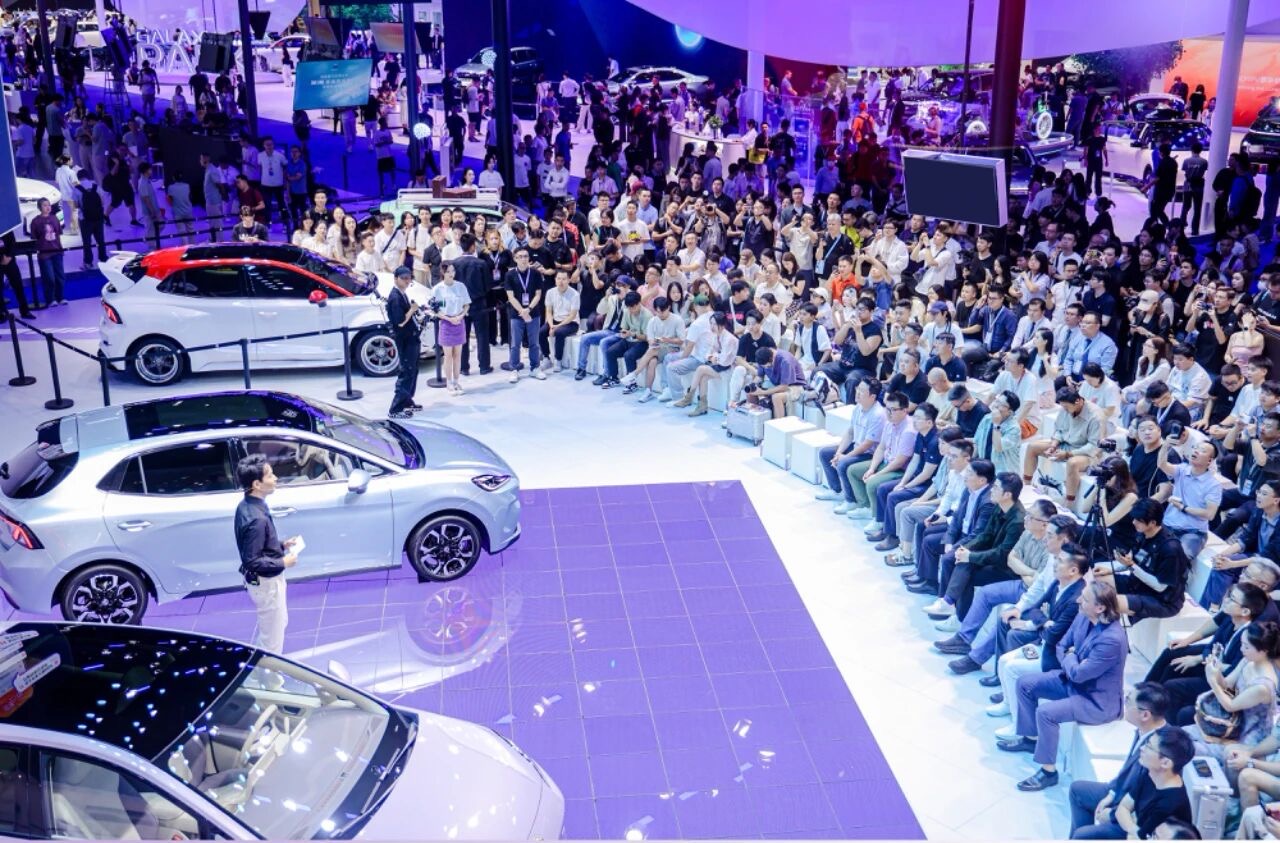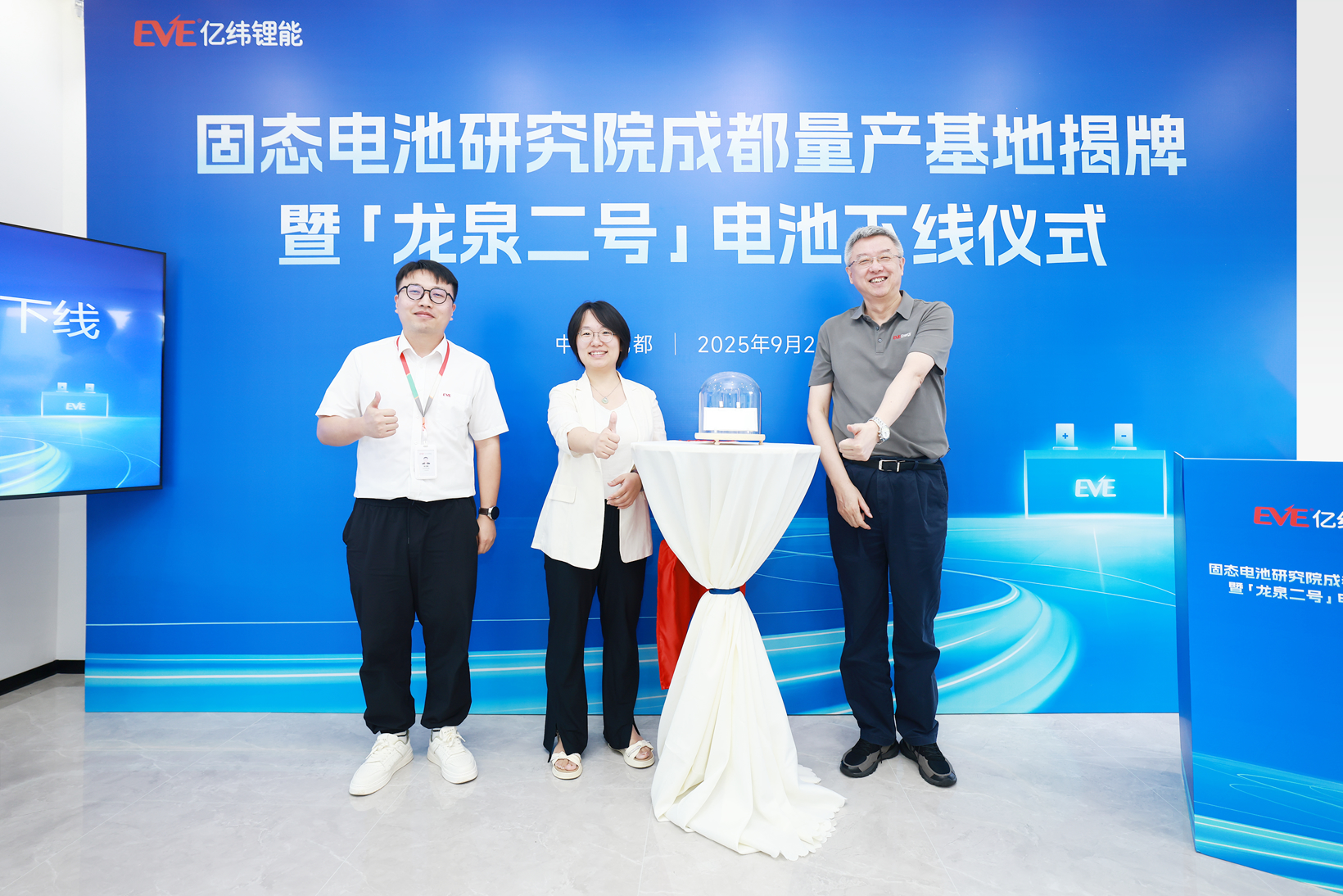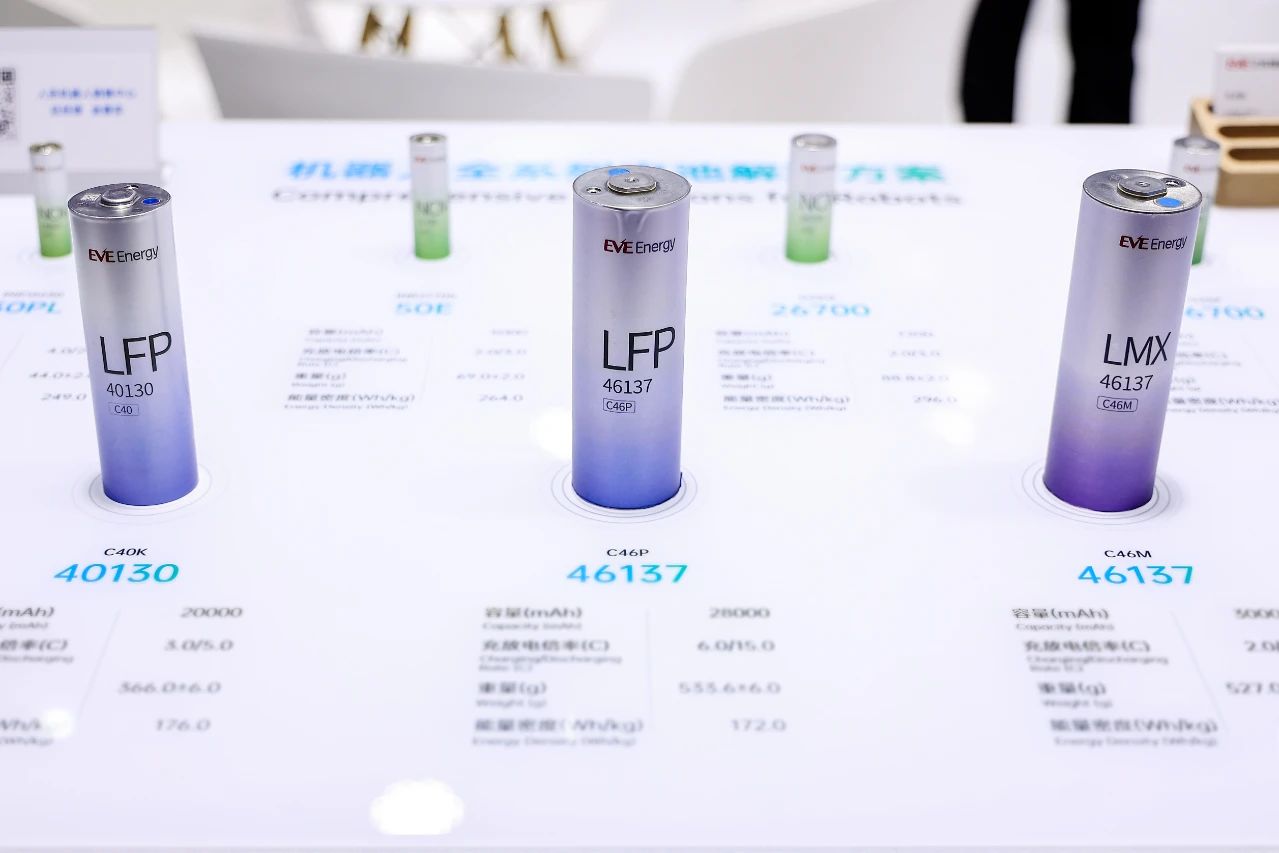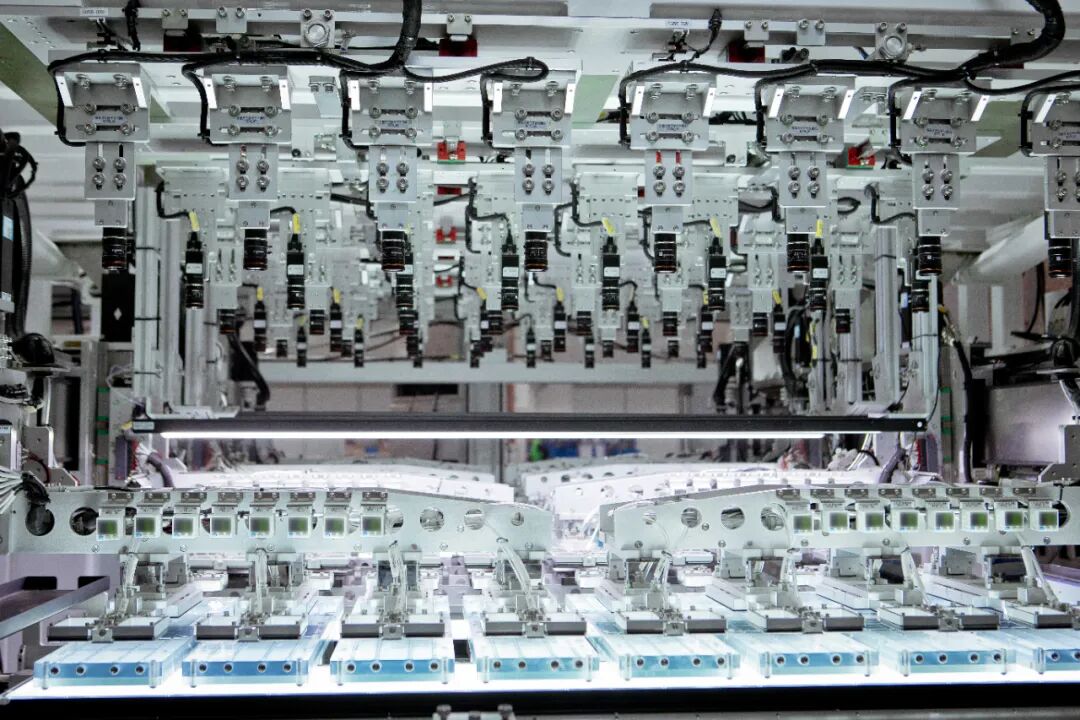Solid-state battery mass production no longer just awaits cars
Solid-state batteries, as the next-generation battery technology, have always been the focus of capital and industry attention.
For a long time, consumers have been eagerly anticipating the mass production and implementation of solid-state batteries in new energy vehicles. However, as of now, the mass production in the new energy vehicle sector is still primarily focused on semi-solid-state batteries.
However, the commercialization of solid-state batteries has not come to a halt. Gasgoo Auto has learned that the new story of solid-state batteries is quietly shifting towards emerging fields with greater explosive potential, such as the low-altitude economy and humanoid robots. At present, many companies have achieved new technological breakthroughs in these emerging fields and have received customer orders.
"First semi-solid, then all-solid"
Despite the industry's long-standing anticipation of all-solid-state batteries, their commercialization has consistently followed a path from easy to difficult. In this context, semi-solid-state batteries, as a key transitional technology, are taking the lead in entering a new stage of large-scale application.
At the Chengdu Auto Show on August 29, the all-new SAIC MG4, equipped with a semi-solid-state battery, was officially launched, with a starting price of 65,800 yuan. It becomes the first semi-solid-state battery model priced under 100,000 yuan. It is reported that this battery, through innovation in underlying material technology, reduces the liquid electrolyte content to 5%, approaching the level of quasi-solid-state battery, fundamentally resolving the risk of battery fire hazards.
Industry insiders have stated that SAIC's MG4 has brought this technology to the 100,000-level electric vehicle market, ushering in a "universal benefit" era for semi-solid-state battery technology, which could potentially change the game rules of the new energy vehicle industry.

Image source: SAIC MG
The market's early adoption has paved the way for more advanced technological paths. In September, Funeng Technology disclosed the progress of the research and industrialization of its third-generation semi-solid-state battery on the investor interaction platform, stating that the product is planned to be mass-produced in 2026. It is reported that Funeng Technology's breakthrough focuses on the dual paths of "solid-state electrolyte application + in-situ solidification technology," not only increasing the energy density of pouch cells to 400Wh/kg but also laying a critical foundation for the industrialization of high-safety, high-energy-density batteries through the reduction of electrolyte and the introduction of solid-state materials. This advancement pushes domestic semi-solid-state batteries from laboratory research to large-scale application.
As Yang Hongxin, Chairman of Svolt Energy, stated, semi-solid-state batteries, as a relatively independent and widely applied technological route, have become a core area of current industry competition.
He mentioned that semi-solid-state batteries not only significantly enhance safety but also improve manufacturing yield and optimize quality performance throughout their lifecycle.
It is reported that in the field of semi-solid-state batteries, SVOLT Energy has successfully overcome several technical bottlenecks in mass production with its self-developed "electrolyte thermal composite transfer process." This process achieves efficient and uniform transfer of the electrolyte layer from the separator to the electrode sheet through a polar conversion adhesive formulation and a contour gradient hot pressing technique, significantly increasing the transfer rate from about 20% in the early stages to over 95%.
This technology is not only fully compatible with existing production lines, requiring no additional equipment investment, but also brings significant improvements in processing accuracy, yield, and safety: HIPOT yield increased by 10%, differential pressure defect rate reduced by 6%, and safety performance improved by 50%.
Currently, SVOLT Energy adheres to the industrialization path of "first semi-solid, then all-solid," balancing technical maturity and market acceptance to gradually promote the commercialization of solid-state battery technology.
According to the official announced plan: SVOLT Energy intends to complete the development of a 10Ah-class, 400Wh/kg all-solid-state cell system by the end of 2025. In 2026, the first generation semi-solid-state batteries will undergo mass production ramp-up, and the development of the second generation 400Wh/kg semi-solid-state battery will commence. By 2028, the company plans to launch the third generation 450Wh/kg semi-solid-state battery and aims to develop a more than 70Ah, 500Wh/kg pure solid-state battery within the same year.
Low-altitude economy and humanoid robots, among other new scenarios, are driving new demands.
As the entire industry's attention remains focused on new energy vehicles, the application scenarios for solid-state batteries have quietly expanded, with humanoid robots and the low-altitude economy becoming new tracks that battery companies are competitively exploring.
With "embodied intelligence" and "intelligent robots" being included in this year's Government Work Report, humanoid robots have become a hot topic in technology. The year 2025 is even being referred to as the "first year" of mass production for humanoid robots. However, as the "energy heart" that determines their mobility, power batteries remain the key bottleneck restricting the development of humanoid robots.
Feng Yanqiang, the Chief Engineer of Robot Batteries at EVE Energy, stated directly at a recent forum: "Currently, the biggest challenge faced by humanoid robots in the industry is insufficient battery life. This is also one of the industry's pain points."
To address this challenge, EVE Energy showcased its "Compact Energy Solutions" at the 2025 World Robot Conference, presenting a full range of battery solutions for robots.
In September, the EVE Energy Solid-State Battery Research Institute's Chengdu mass production base was officially inaugurated, and the "Longquan No. 2" all-solid-state battery was successfully launched. The "Longquan No. 2" launched this time is a 10Ah all-solid-state battery with an energy density of up to 300Wh/kg and a volumetric energy density of 700Wh/L, primarily targeting high-end equipment application fields such as humanoid robots, low-altitude aircraft, and AI.

Image source: EVE Energy
According to the official disclosure from EVE Energy, the solid-state battery plant covers a total area of approximately 11,000 square meters, with an annual production capacity of nearly 500,000 battery cells upon full operation. The plant will be constructed in two phases. The first phase is expected to be completed by December 2025, with the capability to manufacture 60Ah batteries. The second phase is planned to deliver an annual capacity of 100MWh by December 2026.
In addition, EVE Energy and VitaPower have reached a deep cooperation in the robotics business. The two parties will work together to promote the further development of embodied intelligence product mass production based on user needs and trends in robotic power battery technology. They will jointly develop higher density battery packs, with a potential increase in power by 30%, enabling outdoor endurance of over 6 hours to meet daily usage needs.
In addition to new energy vehicles, SVOLT Energy is also actively exploring emerging fields such as the low-altitude economy and robotics, and has reached cooperation intentions with multiple automobile companies and aircraft manufacturers.
According to reports, SVOLT Energy has established a dedicated production line for semi-solid-state batteries with a capacity of 2.3GWh and has completed the development of the first-generation 270Wh/kg prismatic cell, with plans for C-sample mass trial production in November 2025. This product has received orders from a well-known European brand for electric vehicles and has been successfully designated for a central enterprise eVTOL project. Meanwhile, SVOLT Energy is developing a pouch-type semi-solid-state battery with an energy density of 360Wh/kg aimed at mass production. Samples have been officially sent to a central enterprise for low-altitude aircraft, with plans for the first flight to be achieved this year.
Recently, Ganfeng Lithium disclosed on the investor interaction platform that the company's solid-state batteries have been trial-mounted on certain vehicle models and have achieved mass production. Additionally, significant progress has been made in areas such as drones and consumer electronics.
In the view of industry insiders, China has already demonstrated a leading position in emerging fields such as the low-altitude economy and humanoid robots. By taking semi-solid-state batteries as a breakthrough for industrialization and serving as a "bridgehead" for medium-term challenges, Chinese companies are striving to be the first to capture high-end and emerging markets.
Yang Hongxin further stated that, considering the maturity distribution of products, emerging fields such as the low-altitude economy and humanoid robots are expected to become the leading scenarios for the true commercialization of solid-state batteries.
The industry has reached a consensus on industrialization, but mass production still faces challenges.
Since 2025, the solid-state battery industry has seen a series of favorable policies.
On September 22, the National Energy Administration, the Ministry of Industry and Information Technology, the State-owned Assets Supervision and Administration Commission of the State Council, and the State Administration for Market Regulation jointly released the "Guiding Opinions on Promoting High-Quality Development of Energy Equipment," which clearly proposed the development of "key equipment for long-life, wide-temperature range, low-decay lithium batteries, sodium batteries, and solid-state batteries."
In September, Wu Guogang, a level-two inspector from the Electronic Information Department of the Ministry of Industry and Information Technology, publicly stated that the next step is to strengthen the innovation and leadership in lithium battery technology, accelerate the deployment of forward-looking technologies, and expedite the research, development, and industrialization of solid-state batteries, sodium-ion batteries, all-climate batteries, fast-charging batteries, and key materials.
In fact, the industry has gradually reached a consensus on the progress of mass production of solid-state batteries.
"Since the beginning of this year, at least at the level of the capital market, there has been a consensus on the trend of solid-state battery commercialization. The core judgment is that in the next 3 to 5 years, China will become the fastest country in promoting the commercialization of solid-state batteries, including the maturity of technology and the completeness of the industrial chain," Zeng Tao, Executive General Manager of China Galaxy Securities Research Institute and Chief Analyst of Power Equipment and New Energy, stated publicly not long ago.

Image source: EVE Energy
In the view of industry insiders, all-solid-state batteries currently face significant mass production pressure and there are still many technical challenges to overcome. However, once these challenges are addressed, their potential for safety and ultra-high energy density will make them the ultimate technical route choice for power batteries and energy storage batteries.
According to Morgan Stanley's forecast, the global solid-state battery market is expected to reach $120 billion by 2030, with China accounting for an estimated 40% of the market. Capacity building is accelerating across the board.
The research report by CITIC Securities also states that from 2025 onwards, all-solid-state batteries from companies like SolidPower and Gotion High-Tech will gradually begin on-road testing in vehicles. The years 2025-2026 will see intensive on-road testing of all-solid-state batteries in vehicles.
As a leading company in the global power battery industry, during a recent performance briefing, a spokesperson from CATL highlighted the progress in solid-state batteries. CATL believes that the scientific issues related to solid-state batteries have been largely resolved, and the main challenges now lie in engineering. It is anticipated that solid-state batteries will achieve small-scale production by 2027, with the potential for large-scale application by 2030.
It is reported that all-solid-state batteries currently still face interface issues and manufacturing process challenges. In addition, the cost of all-solid-state batteries is currently much higher than that of liquid batteries. Even in two to three years, it is expected that there will still be a 5-10 times difference. Therefore, how to achieve mass production and control material costs remains the core issue facing industrialization.
CITIC Securities also mentioned that the core issues faced by the deployment of all-solid-state batteries in vehicles are expansion and cycle life degradation. The consensus between car manufacturers and battery companies is to address these issues through solid-state improvements and by applying pressure on the vehicle side.
"Whether it is a liquid or solid-state battery, they essentially fall under the category of lithium batteries," said Yang Hongxin. After decades of development, some areas have matured, while others have shifted from policy-driven to market-driven, and new application scenarios such as low-altitude economy and humanoid robots are emerging. Looking ahead, the application boundaries of lithium batteries are continuously expanding, including future fields like aerospace and deep-sea exploration.
The upstream of the industrial chain has already benefited from the "dividends".
The current technology roadmap for solid-state batteries exhibits diversification. In terms of electrolyte types, they are mainly categorized into polymers, oxides, sulfides, and the recently popular halides. From the perspective of mainstream major manufacturers' technology choices, sulfide electrolytes have the upper hand.
In fact, every step that solid-state batteries take towards industrialization affects market sentiment. As the solid-state battery industry continues to catalyze, several listed companies have announced their related layouts within the solid-state battery industry chain. Equipment manufacturers, being upstream in the industry chain, have already begun to benefit from the dividends brought by solid-state batteries.
In June this year, Lead Intelligent announced the delivery of multiple sets of core solid-state battery equipment to a globally leading battery manufacturer, including composite transfer equipment and high-speed stacking equipment. Previously, the company had successfully completed the entire process equipment chain for mass production of solid-state batteries and delivered the world's first solid-state battery pilot line.
In the same month, Yinghe Technology announced that the solid-state wet coating equipment, solid-state rolling equipment, and solid-state electrolyte transfer equipment shipped to a leading domestic battery enterprise had successfully arrived at the customer's site. It is reported that the aforementioned equipment is used for the construction of a pilot line at the customer's domestic factory.

Image Source: SVOLT Energy
On September 23, Hymson released an announcement regarding the record of investor relations activities, stating that the company is the first in the industry to achieve the "oxide + lithium metal anode" technical route and complete the commercial cycle of lithium metal solid-state batteries, which are applied in solid-state battery devices for low-altitude aircraft. Currently, lithium metal solid-state battery equipment is being delivered in batches. In the technical route of "sulfide + silicon-carbon anode," the company has also obtained pilot line orders from several globally leading new energy technology enterprises. The company is currently actively collaborating with domestic Company C and Company B on key processes related to solid-state batteries.
However, some industry insiders have pointed out that the stock prices of several lithium battery equipment companies have surged recently, and they have launched so-called "complete solid-state battery mass production equipment." In reality, the related processes and equipment are far from mature and still have a long way to go before achieving true mass production.
Undeniably, under the dual drivers of policy and technology, the pace of solid-state battery industrialization is accelerating. Overall, domestic leading battery companies have basically clarified their solid-state battery technology paths and are continuously advancing towards mass production. With the collaborative promotion of the industry chain, emerging application fields are becoming an important engine for the commercialization of solid-state batteries. As Yang Hongxin has called for, the industry should work together to build a "new ecosystem" for China’s solid-state batteries, "contributing Chinese solutions and wisdom to the global automotive industry's green transformation."
Conclusion:
The race for solid-state batteries has long surpassed the mere pursuit of energy density and has become a strategic layout for future industrial discourse power. From speeding highways to vast skies, and even into the intelligent robots in our lives, the extreme demands for safety and performance are compelling battery technology to undergo a profound iteration.
The current advent of semi-solid-state batteries has established a solid "bridgehead" for industrialization; whereas the ultimate goal of all-solid-state batteries guides the entire industry towards breaking through the ceiling.
The path of advancement is fraught with technical and cost challenges, yet the rewards are transformative. Solid-state batteries are expected to become an indispensable "energy cornerstone" for enabling a smart, low-altitude society in the 21st century. This silent energy revolution tests not only a company's technological endurance but also a nation's foresight and determination in the high-tech industry ecosystem. Whoever can first reach the finish line in the industrialization of solid-state batteries will hold the entry ticket to the next round of industrial transformation.
【Copyright and Disclaimer】The above information is collected and organized by PlastMatch. The copyright belongs to the original author. This article is reprinted for the purpose of providing more information, and it does not imply that PlastMatch endorses the views expressed in the article or guarantees its accuracy. If there are any errors in the source attribution or if your legitimate rights have been infringed, please contact us, and we will promptly correct or remove the content. If other media, websites, or individuals use the aforementioned content, they must clearly indicate the original source and origin of the work and assume legal responsibility on their own.
Most Popular
-

Zf asia-pacific innovation day: Multiple Cutting-Edge Technologies Launch, Leading Intelligent Electric Mobility
-

Mexico officially imposes tariffs on 1,400 chinese products, with rates up to 50%
-

List Released! Mexico Announces 50% Tariff On 1,371 China Product Categories
-

Fire at Sinopec Quanzhou Petrochemical Company: 7 Injured
-

Argentina Terminates Anti-Dumping Duties on Chinese PVC Profiles! Kingfa Technology & Siemens Sign Digital and Low-Carbon Cooperation Agreement






